Every Varilux lens has its own benefits. As you progress in age your needs in your Varilux lenses change because you need more reading power. When this happens it is wise to go up in lens quality. In this article, you get an in-depth explanation of what to do and why to do it.
| Add Value | Comfort | Physio | E Design | X | Xclusive 4D |
| +0,75D | ✓ | ||||
| +1,00D | ✓ | ||||
| +1,25D | ✓ | ||||
| +1,50D | ✓ | ||||
| +1,75D | ✓ | ||||
| +2,00D | ✓ | ✓ | |||
| +2,25D | ✓ | ✓ | |||
| +2,50D | ✓ | ✓ | |||
| +2,75D | ✓ | ✓ | |||
| +3,00D | ✓ | ✓ |
As you can see in this chart I gave you some recommendations based on the Add value (reading power) on which Varilux model to choose. The reason is the more you move right in the columns the more advanced is the lens technology. And as you move down the rows your reading power increases. And with the reading power increases the distortions in the Varilux lenses that bring you blurriness in the sides.
So the reason really is to optimize the lenses (go to the right) the more reading power you need. Because as time passes you will need more support from your progressive lenses and what happens is the zone for reading gets smaller with every 0,25D you go up.
Frankly spoken it gets more expensive as we move to the right of the Varilux lenses table.
Side note from me.
Just looking at your needed Add value to give you the recommendation to choose a Varilux lens design would be a little dull. So let us dug a little deeper. When looking at different faces you will notice the pupilar distances vary. And so does the reading zones in your Varilux lenses as you order the 360 packages with it. It is basically a way to customize the lenses to your needs.
Most lenses can have that feature except for the Varilux Road Pilot and some lower-priced or specialized models which we will go down into detail later.
Side note from me.
The mentioned 360 feature in combination with a higher-end lens makes definitely also sense when your prescription is quite high and your Add Value is lower (like +1,25) than with a prescription of +/-6D you would still get distortions in the periphery and the 360 package fights these effectively.

Varilux lenses do this with a customization of your parameters on how the glasses sit in your face. How far is each pupil away from the middle of your nose, where is your eye rotation center how big is the tilt of the frame in your face, and a few things more… With all the information the blue zones on the lens can be best distributed for you individually to have the widest field of view. And to not get the result on the left side here above with the standard set of parameters.
Just ask your optician if one of the parameters is out of place. And if he says something like “yeah your eyes are a little bit more apart as the average value would be” (of 32mm on each side) then just order the 360 feature with my recommendation and you will be fine.
Maybe you just have standard parameters in your face and then of course you would not benefit from the 360 feature. As the Add value increases most people will benefit from it.
side note drom me.
Varilux Comfort 3.0 Design
The Varilux Comfort Design has been on the market for a while as has been updated to newer standards over the years. This design was one of the first to adopt the freeform technology to provide the wearer natural vision by large viewing zones in combination with a soft periphery. When the periphery is designed with a soft design (which most progressive lens designs have today) the distortions of the lens are slightly noticeable as you perform eye movements into the periphery.
The image just gets a little blurrier but with a slight increase the more you look into the sides. Compared to that hard progressive lens designs gives you wider clear zones but then the distortions will be more noticeable as you perform eye moments into the periphery. There is a great resource if you want to get more into the mathematical part of designing progressive lenses by Werner Koeppen.
The thing with this design is the development of progressive lenses continually progresses in incremental steps. And if you get a Varilux Comfort Design it is made out of a blank that is compatible with this design (which is the raw product before it gets cut to your prescriptions). In short, you can not make every lens design out of every blank.
This lens design can be adjusted very uniquely in 0,1mm increments in regards to where the reading zone is in front of your eyes. These distances get measured with Visio Office 2 which is a device made by Essilor to unfold the full potential of their lenses. So now that I talked a little bit about the lens design when would I choose it and when not.
If you have very high prescriptions or you want to use digital devices like your Ipad a lot it might be a good idea to consider the X design which is more optimized for those situations. However, if you do not have higher prescriptions and you are just about getting to start with progressive lenses and your reading power does not have to be that strong (like +1,25) you will probably not notice the difference between the lower-priced comfort design and the X Design (The high-end model).
Technically you can also order this progressive lens design with higher prescriptions and a higher Add value up to +3,00D as you wish.
Varilux Physio 3.0
The Varilux Physio 3.0 has a few design features that other models do not provide in the line-up. You can choose with these lenses whether you want a lens design that focuses more on distance vision, has a balanced design, or is more built for near range activities. That means your fields of view are pre-adjusted by design. If you drive a lot in your car and you want to get the distortions out of the way as much as possible for the distance vision you can order it that way. As you do this near vision gets a little bit more compromised.
I really like this feature. Of course, it takes more time during the consultation to find out what is the perfect choice is for you but this is why I love being an optician so much.
side note drom me
With the Varilux Physio we stepped up a little bit in the lens quality and what comes with this Varilux lens is the Binocular Booster Technology to let your eyes play together as smoothly as possible. With progressive lens designs, you are forced to perform eye movements out of the center of the lenses. If you do this there are prismatic effects that will occur. So your left eye sees the picture slightly above or lower as the right eye can observe it.
By choosing a shorter lens design in general you can minimize the effect. The physio takes this into calculations directly and optimizes the lenses to give you a smooth transition from far to near vision. Those effects come into play if one eye needs the power for example of +1,00D and the other of +2,50D in the distance. If your needed prescription is different in both eyes this lens design may give you more comfort in vision.
Varilux E Design
The E Design is based on the nanoptix calculations that address a common issue with progressive lenses. The swim effect. As with the Swim Control Technology built-in, a lot of people still have to adjust to their new Varilux lenses but a lot of people recognize the effect of fewer distortions while performing head moments in rotation or tilting their heads.
By implementing the nanoptix into the calculations of the lenses the off-balance feeling many people have when wearing progressive lenses can be reduced. This can stem from lines that are actually straight but appear to be bent as you look through your lenses. I do not claim here that those effects are totally gone with the E Design but I do think it addresses this issue fairly well and our customer feedback confirms that.
Varilux X
With Varilux X, several wishes from progressive wearers will be considered here. It combines the already mentioned nanoptix technology to reduce swim effects in combination with synchroneyes to maximize the field of view in both eyes simultaneously. As the last decades passed by our lifestyle changed a lot. Oftentimes we are more focused on the near range constantly switching screens and distances. Varilux X takes that into consideration.
The result is a less needed head movement to find the right zones in the lens in order to see clearly. That gives you as a wearer more comfort in vision because you have wider fields of view in the near range (in the distance from 40 to 70 cm) and less stress with blurry sides because you do not need to adjust as much with the head.
I had a handful of customers that told me the Varilux X Series replaced their progressive computer glasses but that is not the general case. Most of the time people notice a slight change as they do not have to adjust as much. But it is still a progressive lens and you should realize that you need to point your nose at things you want to look at. Because as I said before we progress in incremental improvements here to give you a realistic expectation.
Older lens designs as the before mentioned lens designs are optimized for reading a DIN A 4 sheet of paper. Because the power of the reading zones reach 85% of their potential in a given distance as you perform eye movements down into the reference point for near vision. The distance that was set for you holding the sheet of paper was estimated to be 40cm. But that were the old calculations today we use more distances in the near range as we used to do. And we are constantly switching.
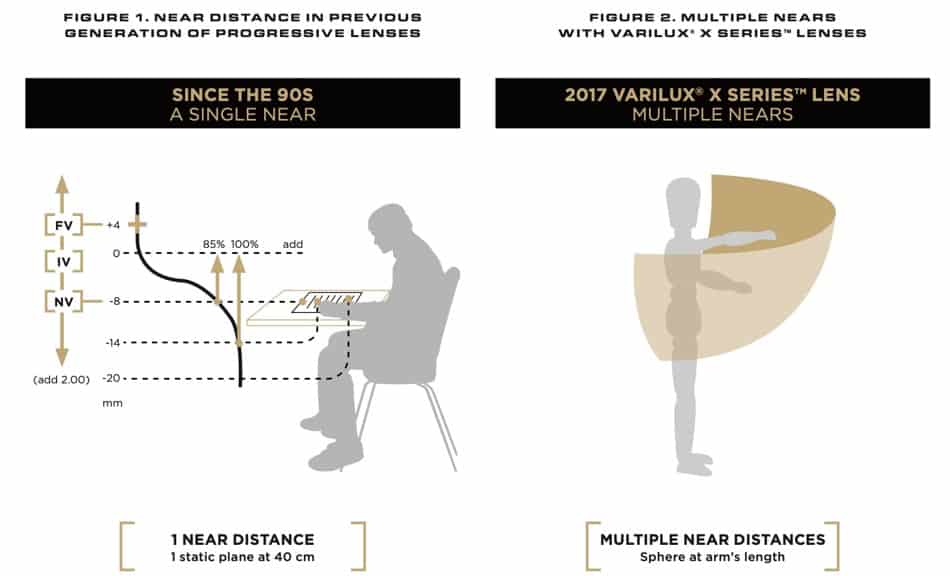
So the Varilux X takes multiple distances into account. That are some really nice adjustments for the masses of wearers of these high-end progressives. However, if you do not need the arm length distance at all in your daily routines you might not notice any differences to previous versions of Varilux designs.
Varilux Xclusive
The Varilux Xclusive has all the advantages from the X Design but it is a little bit more customized to your near range reading behavior. Compared to its predecessor the Varilux S it performs better in more space in front of you in which you can see sharp. That leads to faster adjustments to see clearly and an easier adaptation process. So it is not about the width of the field of view but how much space you have in front of you to move at your arm’s length with all the digital devices that have their own reading distances.
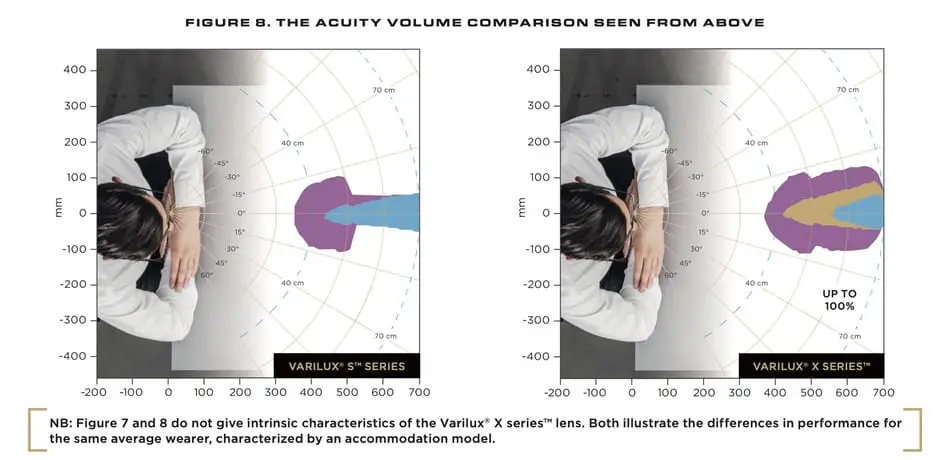
The Varilux Xclusive customization is made by considering the measurements from a separate device that collects your near-vision behavior profile. This is pretty neat because it takes the following into account.
- How much are you looking down while reading
- In which distance do you read
- Do you look more to the left or to the right while reading
- Are your eye movements more concentrated or spread while reading
Varilux lenses are definitely pushing the boundaries here of how much-personalized data you could take into account to get you the most comfortable vision possible. And as you think about it, it just makes sense. We are all a little bit asymmetric in our behaviors and our bodies. The Eye movements of a 2m tall guy and where he looks through the lenses are just totally different from a smaller woman with a smaller pupilar distance. Giving both the same lens with the same reading zones would be optimal for none of them. We are just too unique for one progressive lens design to fit all.
So maybe you realized by now that one or the other lens designs may fit you better because of the features that come with it. But now we want to get into three examples to give you a clearer understanding.
Examples on What Varilux Lens to Choose
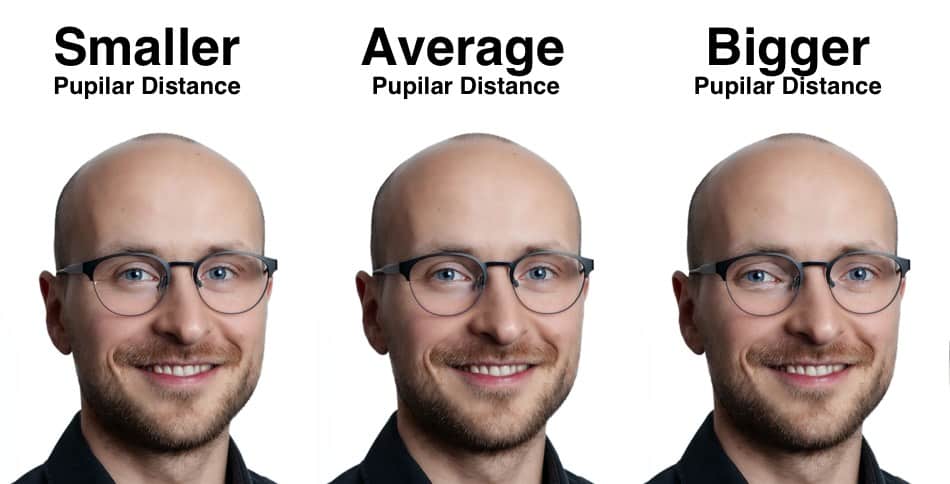
In the picture, you can see me three times. On the left, my pupilar distance is a little bit smaller. On the right, my pupillary distance is a few millimeters wider. Let us pretend I had an Add value of +1,00 which is pretty low and as I am an optician I spend my time with all kinds of near-range distances all day long. When I choose progressives I may not get the difference of the Varilux lenses so much because my eyes can still adjust to the near range. So a little reading power sharpens the reading material but I probably could get along without the reading zone for a short time.
In this stage of presbyopia, the fields of view are very wide and I can perform big eye movements to the sides and the reading zones stay clear. And if you have lower prescriptions you will be absolutely fine with the lower-priced models. If my prescription would be a lot higher and your frame sits very tilted or straight in front of your face order the 360 feature with it. It will take this into consideration. Because when the lenses are tilted in front of your eyes you will notice this as a blur. The standard is 8°.
When time passes I will rely more on the reading power of the Varilux lenses. And at some point, I might not even see my mobile clearly with my arms straight without the progressives. This is totally normal and has to do with your eye’s ability to adjust to the near range. As this process progresses the fields of view will get smaller with every Varilux lens you buy provides you with a more powerful reading zone compared to your old glasses.
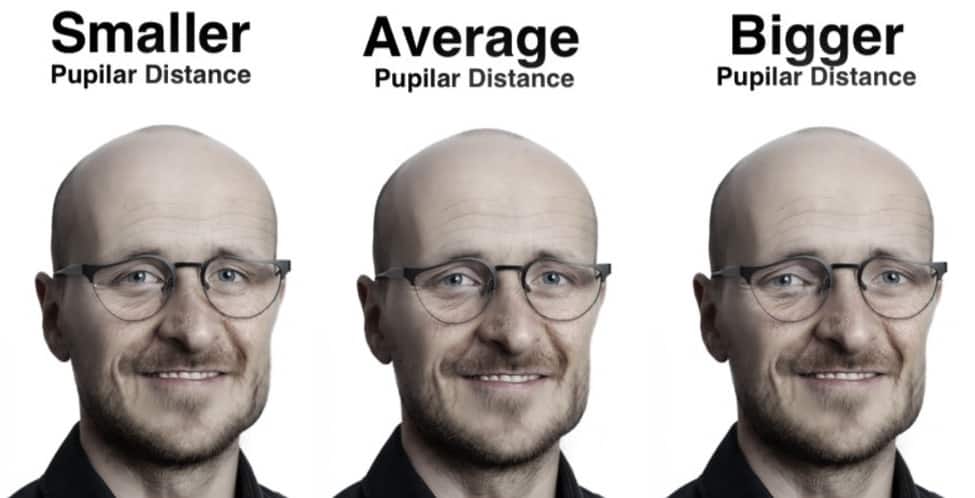
Now when I would have passed the age of 65 years old my eyes do not need stronger reading zones in my Varilux lenses with every new glasses I buy. They now have an Add Value of +2,00D to +2,50D. When we reach this phase the zones to read clearly got A LOT smaller compared to the progressives you had when you were 40 years old. In most cases now it makes sense to tweak every angle and to consider every distance.
If I at this age will not use digital devices the Varilux Comfort might be the best choice for me. Because I do not need the features of other lenses and I am so well adjusted to my progressives that I do not even notice any bent lines anymore. If my pupilar distance is either wider than usual or smaller and I have problems with the swim effect then it makes definitely sense to step up the lens quality to the Varilux E Design and order the 360 feature with it.
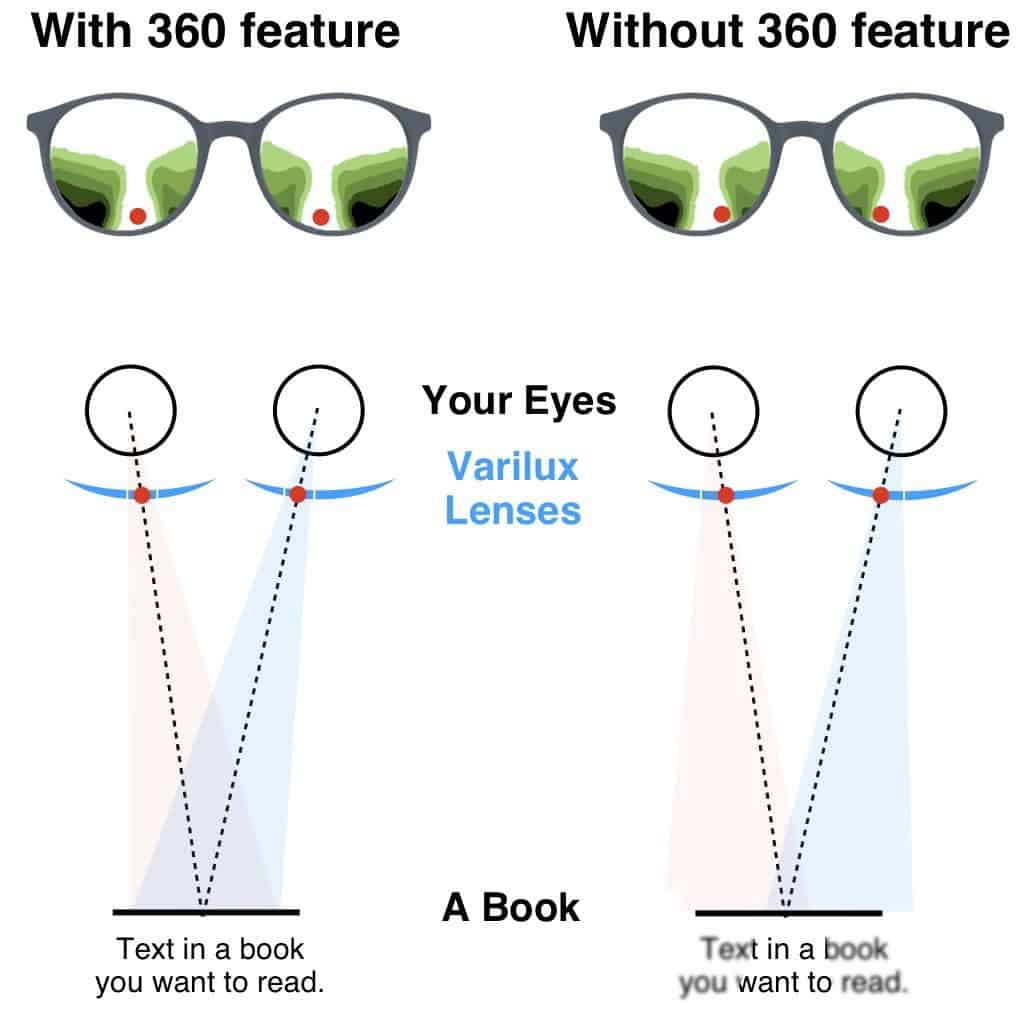
As you can see above in the picture if your pupilar distance which is just one out of many parameters is outside the average (32mm from pupils center to the center center of the frame sitting on your nose) then your reading experience would differ a lot from someone who bought the exact same Varilux lenses but had a standard pupilar distance.
I hope this makes clear what might be the best Varilux lens for you. But we only discussed the all-day Varilux lenses. All Varilux lenses have their limitations that is why we should have a closer look at the more specialized designs.
Varilux Digitime
The Varilux Digitime is a progressive lens designed to give you MAXIMAL comfort in the near range. While all other lenses described above try to fit in all the distances in on lens they and up providing you with pretty small reading areas if you want to read for a few hours or want to get some PC work done. This lens is available in three options.
- Near
- Mid
- Room
To be clear you can not walk outside with the Digitime lenses. Your vision would be blurry but indoors they will delight you with the width of the field of view you will have while reading or looking at the PC screen. As you add more distance into those lenses to get your TV sharp the blurriness on the sides will get more noticeable. If that is not really necessary and PC work is your focus my recommendation is to stay with the Mid variant. You can perform big eye movements while reading on the screen.
Varilux Road Pilot
The Varilux Road Pilot is a design made for car drivers. With this lens design, you can perform eye movements wide into the periphery and you still can see clearly. It is designed to give you a clear vision from the distance to your dashboard. But a short disclaimer here. Although it is a progressive lens too you can not read your mobile with it. The distance you can read it really starts at your dashboard.
This is a great lens to use as an addition to your normal progressives. You can perform looks into the rear mirror and directly back onto the street without the need to point your nose to the mirror to see it clearly. That happens all the time with normal progressives but not with this model.
How Much Do Varilux X Series Lenses Cost?
I saw prices starting at 295$ per pair which is ridiculously low and not even my purchasing price from the manufacturer. But that was an online retailer. And obviously, he does not provide you with the measurements to maximize your near-range vision. This can be only done if your eyes rotational center or the vertex distance, in combination like the pantoscopic tilt is measured. I expect one lens to start at 500$ for a professional optician.
Who Sells Varilux Lenses?
You can buy the lenses from an optician that partnered up with Essilor.
Do Varilux Lenses Have Uv Protection?
Yes, they do have UVA and UVB protection, if you order them with the coating with the ending UV like the Crizal Sapphire UV you will get the highest UV protection in clear lenses (The Crizal Prevencia also provides you with UV protection).
It was a pleasure for me to introduce you to all the Varilux lenses. I hope to know you know a lot more and you can answer the question “which Varilux lens Is best for me?”. In this article, I gave you some basic explanations about what Varilux lens type to choose combined with my 15-year experience with Varilux lenses as an optician. I wanted to keep this article as short as possible that is why I didn´t go into detail with Varilux lenses that are not as relevant to the normal customer as the Varilux Omega, Varilux Exceptio, or the Varilux Junior.

